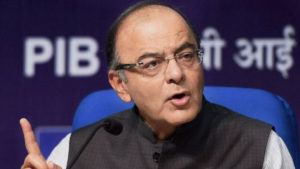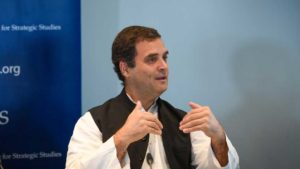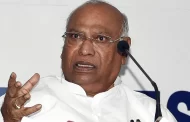The minister, who joined office just two days ago, emphasised that in the last four years the economy has witnessed a series of reforms, both legislative and otherwise

Union Minister for Finance and Corporate Affairs Arun Jaitley on Sunday came down heavily on the former United Progressive Alliance (UPA) government highlighting a report by the International Monetary Fund (IMF) that projects the positive transformation and reforms in the Indian economy in 2018 as compared to that in 2014.
The minister, who joined office just two days ago, emphasised that in the last four years the economy has witnessed a series of reforms under the Modi government, both legislative and otherwise. He also said the economy has been able to come a long way, after the UPA’s wrong decisions had let to high inflation, high fiscal deficit, high current account deficit, a standstill infrastructure, power sector and allocation of natural resources.
“The system has been substantially cleaned up and made more transparent. Decisiveness has led to easier decision making and made the economy stand out before several other countries,” he added.
According to the IMF, “Stability-oriented macroeconomic policies and progress on structural reforms continue to bear fruit. Following disruptions related to the November 2016 currency exchange initiative and the July 2017 goods and service tax (GST) rollout, growth slowed to 6.7 percent in FY2017/18, but a recovery is underway led by an investment pick up.”
“Headline inflation averaged 3.6 percent in FY2017/18, a 17-year low, reflecting low food prices on a return to normal monsoon rainfall, agriculture sector reforms, subdued domestic demand, and currency appreciation. The near-term macroeconomic outlook is broadly favourable. Growth is forecast to rise to 7.3 percent in FY2018/19 and 7.5 percent in FY2019/20, on strengthening investment and robust private consumption,” it added.
In 2014, IMF in its report had highlighted the shortcomings that had occurred under the UPA government. It had said, “The tightening of global liquidity has increased external pressures and heightened the focus on India’s macroeconomic imbalances (high inflation, large current account and fiscal deficits) and structural weaknesses (particularly supply bottlenecks in infrastructure, power and mining).”
The IMF had also warned, “Growth is expected to slow to 4.6 percent this fiscal year, the lowest level in a decade, reflecting global developments and domestic supply constraints. Headline CPI inflation is expected to remain near double digits for the remainder of the fiscal year. The current account deficit is narrowing, driven by a significant improvement in exports, robust remittances flows, and a rapid diminution of gold imports. Nonetheless, India has very little room to adopt countercyclical policies, constrained by persistently-high inflation, and sizeable fiscal and external imbalances. Spillovers from renewed external pressures interacting with domestic vulnerabilities are the principal risks.”
source: Zeenewsindia.com







































